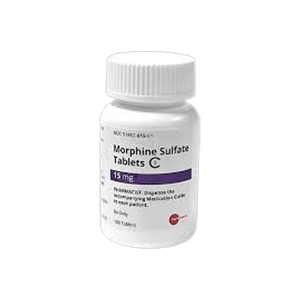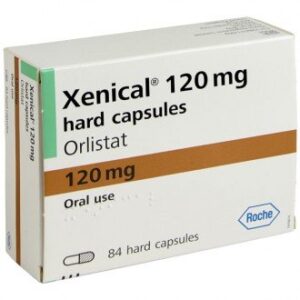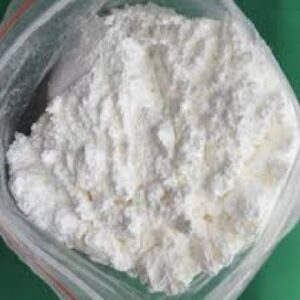How Morphine 15 mg works
- Morphine 15 mg is an analgesic (pain-reliever) that may be used to treat moderate-to-severe pain that is unresponsive to other, less potent, pain-relieving medicines.
- Morphine works by binding mainly to mu-opioid (MOP) receptors in the brain and the periphery, including the stomach. Activation of MOP receptors in the midbrain is thought to be a major mechanism of opioid-induced analgesia. When morphine binds to MOP receptors it indirectly stimulates descending inhibitory pathways and 5-hydroxytryptamine and enkephalin-containing neurons that ultimately results in a reduction in nerve transmission from the periphery to the brain. Morphine has very strong pain-relieving effects.
- Morphine belongs to the group of medicines known as narcotic analgesics. It may also be called an opiate agonist, an opioid analgesic, or an opioid.
Benefits of Morphine 15 mg
- May be used to treat severe acute pain. Considered the analgesic of choice for ST-segment-elevation MI (STEMI).
- Can be given for moderate-to-severe chronic pain in certain populations, such as the terminally ill.
- May be given by injection for pain that occurs during labor.
- Consider for acute pulmonary edema (not caused by a chemical irritant) for its cardiovascular effects and to allay anxiety.
- Has been used to manage symptoms of neonatal opiate withdrawal in neonates exposed to opiates while in the uterus.
- Usually reserved for pain that is not controlled by other pain-relieving medicines.
- Can be given epidurally or intrathecally for severe pain. Using these routes provides pain relief for prolonged periods without loss of motor, sensory, or sympathetic function.
- Available as immediate-release tablets, extended-release tablets and capsules, rectal preparations, solutions, and injections.
- The oral solution is available as 3 different strengths: 10mg/5mL, 20 mg/5mL, and 100mg/5mL. The 100mg/5mL preparation should only be used in opioid-tolerant people.
- Has strong pain-relieving effects.
- Generic morphine is available.
Side Effects
If you are between the ages of 18 and 60, take no other medication or have no other medical conditions, side effects you are more likely to experience when taking Morphine 15 mg include:
- Nausea, vomiting, dizziness, blurred vision, rashes, and sweating. Constipation caused by morphine may be severe and laxatives are typically required.
- Drowsiness may affect a person’s ability to drive or operate machinery.
- Avoid alcohol at all times (alcohol can increase blood levels of morphine leading to a fatal overdose).
- Rarely, serious, life-threatening, breathing problems may occur. The risk is greater with slow-release forms, in people with pre-existing respiratory disease, in seniors or the frail, or in those taking other medications that cause respiratory depression (such as benzodiazepines).
- Consider prescribing naloxone at the same time for patients who are at increased risk of opiate overdosage, or who have household members, such as children, who are at risk for accidental ingestion or overdosage.
- There is a large variability in the way different people respond to morphine.
- Extended-release preparations, such as Avinza, Kadian, MS Contin, or Oramorph SR, should only be used for moderate-to-severe pain that requires around-the-clock opiate therapy for an extended period.












Reviews
There are no reviews yet.